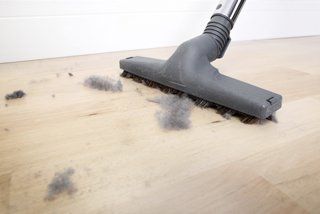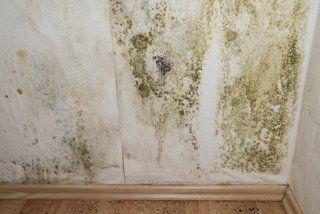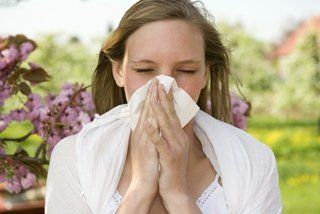
House Dust
Many people suffer from allergies to house dust. This allergy can cause miserable nasal symptoms, but it can also cause asthma and eczema to be more severe. The severe nasal stuffiness can also precipitate sinus infections. In 1964, two Dutch scientists discovered that a microscopic pest is the main component that causes allergies in house dust. The scientific names of the two most common varieties are dermatophagoides farinae and dermatophagoides pteronyssinus. The dust mite is not an insect, but is more closely related to spiders. Unfortunately, these creatures tend to concentrate in the very places in which we spend most of our time, because their source of food is the tiny flakes of skin that we each produce every day. They are found in our own beds, blankets, pillows, carpeting and wherever house dust is found. Fortunately, there are many things that you can do to reduce the impact of this invisible menace.

2. Regular laundering of the blankets, preferably in hot water.
3. Remove carpet or use a HEPA vacuum.
4. HEPA or electrostatic filters often make a difference.
5. Room HEPA filters often makes a difference.
6. Minimize objects in the bedroom that can accumulate dust, such as stuffed toys, bookshelves, wall hangings, Venetian blinds, etc.
Animal Allergen
We are a nation of pet lovers. Our dogs and cats have successfully become an important part of society and many families. Unfortunately, the development of an allergy to our fur-bearing friends is a common event. They are, at times, major offenders in causing severe asthma. It appears the most allergic pet owners would rather suffer from their allergies and asthma than find new homes for their pets. Most are very fond of the family pet and others feel an obligation to the animal or to those who gave them the animal. There are, nevertheless, a number of ways to reduce the impact of such allergies:

1. Keeping them outside.
2. Frequent bathing. Yes, most cats can be bathed, although some are more willing than others. For cats that won't tolerate bathing, stroking them with a moistened cloth can make a difference.
3. Keeping pets outside the bedroom.
4. Filtering the air in the home, just as you would do for dust mite allergies. Placing one strategically in the bedroom can compensate for pet proteins, which may drift into the room.
Mold Allergies
Molds can be a problem both indoors and out. Outdoor molds are actually more plentiful on warmer, dry days. Rain is necessary for their growth, but will also keep them from dissemination. Mold sensitive persons often have more difficulty while doing yard work. Turning the soil, raking leaves, and even moving the lawn will typically increase exposure to outdoor molds. Use of a good filtration mask while doing such yard work often helps. An effort should be made to avoid large accumulations of lawn clippings and other vegetation such as leaves. Indoor molds can also be an enormous problem. They often become a problem when faulty roofing or other building materials allow moisture to enter our homes. Leaky plumbing can also be a source of problems.

Pollen Allergies
When outside, stay away from tall grass, weeds, and trees. While the pollen can travel many miles away, it will still be more concentrated in close proximity to the source. Some have gone to the trouble of removing weeds and trees to which they are allergic from their property. This may reduce the overall exposure, but it is generally not enough in the most sensitive person. Keeping windows and doors closed will reduce the interior pollen count. One practical compromise is to get a small portable air conditioner that can be rolled from room to room for cooling on the hottest days.

